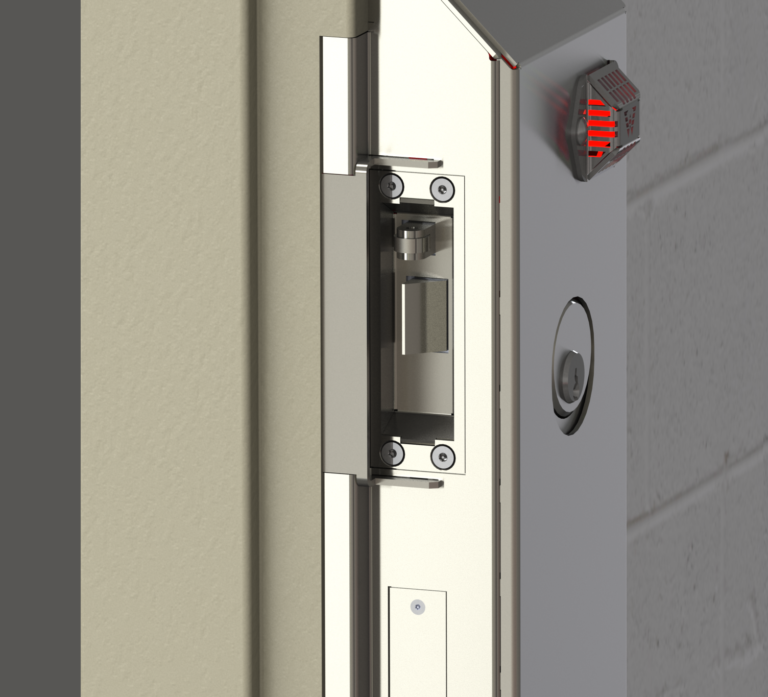Has the Time for Non-Conformist Architecture Arrived?

By Stephen Carter
“One view of good architecture is that it seeks to arouse emotions in the user, which seeks to create unique unforgettable experiences related to the typology and context of the work.” So began an article that I recently read. As you scan the pictures or dive deeply into the articles of the annual Correctional News issue dedicated to Architecture, ask yourself if the typology (corrections) “arouses unforgettable experiences and emotions” in the user, or should.
In the last issue, I suggested that the “next gen” of architects and planners in the correctional typology could stand on the shoulders of past and current pioneers of change in delivery approaches and methods. My hope was that correctional design work would be both inspiring and rewarding enough that they would remain committed to this typology. However, maintaining an interest in producing solutions that arouse positive emotions is not possible without heretics.
I recognize this word has a negative connotation today, but when first used in polite communities in the first century of the Common Era it simply meant non-conformist. Unfortunately, by the fourth century (thanks in large part to “the Church”), the word became not only a pejorative term, but a deadly sentence. I’m going to stick with the original meaning for this article.
Looking back since our independence, about every 50 years the philosophy for the care and custody of those incarcerated shifts enough so as to require a new design response. The last “design eruption” was in the 70’s when the podular design for direct supervision and dynamic security significantly altered the shape and character of jails and prisons. At the time, for many, this was heretical architecture that was practiced by non-conformists.
The likes of Larry Ard (Contra Costa County), Michael O’Toole (NIC), Sam Saxton (Prince Georges County), among others were early non-conformists that challenged architects to transform a management approach into an architectural response. A “style” was born that for a while always generated a lively debate at the beginning of a project. In large part, the free National Institute of Corrections HONI and PONI weeklong programs contributed to the acceptance of this “heretical” approach that became mainstream.
Thanks to the research of professionals like Dr. Rich Wener and Dr. Jay Farbstein, we learned that the architecture of direct supervision did indeed arouse positive emotions from inmates and staff. So, are there non-conformists today that will point us towards the next generation of correctional management and architectural innovation?
Fifty years ago, our incarceration rate was barely 300/100,000. We are more than double that now while the crime rate continues its two-decade decline. The additional 300 can largely be attributed to laws in support of the politics of fear. Mass incarceration is a political response to a mis-perceived public desire to be tough on the criminal regardless of the crime. Much of the architecture of the 80’s, 90’s, and 00’s reflected this harshness all the while recidivism rates averaged 60% or greater.
There has not been an absence of “heretics” who tried to warn us that we could not sustain this approach socially or economically but critical mass was on the side of those who made the rules. Strong voices like those of Joe Lehman, Al Bronstein, Alan Breed, Loren Buddress, Perry Johnson, Mary Livers and dozens of others said our system would collapse under the weight of over-incarceration and over-building. I believe that in some systems the collapse has or is occurring.
Just as happened in the last notable eruption in correctional architecture, the key element must be sustainability. Fortunately, housing units based on the direct supervision approach remain the predominant solution as well as a pathway to the next generation: normalization.
What we seem to be learning from the past decade is that the use of incarceration “as punishment, not for punishment” is not effective in reducing reoffending. In the Province of Ontario, Government went so far as to codify that inmates were to have access to the same level of services and support that would be available in the community. Ask yourself this simple question: how would correctional architecture change if these two conditions informed our solutions? Complicated as it is, this may be normalization.
Who, then, might be the heretics or non-conformists that possess wisdom and respect sufficient to stem the critical mass that is either complacent about the plight of the incarcerated or hold deeply biased opinions informed mostly by the shrill of the uninformed. One, among others, is Gary Mohr, the former Director of the Ohio Department of Rehabilitation and Corrections and ACA President. Several years ago, he spoke at a St. Lewis meeting of the Academy of Architecture for Justice and outlined a vision for a built environment that could be transformative by adopting more normative approaches in message, form, and materiality.
We must have leaders with wisdom and respectability, but also a platform. A better architectural response may actually be facilitated by providing the non-conformist with a far more robust technological base. In the past, I have written about the use of artificial intelligence (AI) to supplement supervision in correctional facilities or improve efficiency in construction. The design advances are so rapid that future building forms will first be conceived through various applications of virtual reality.
According to the Italian writer, Giovana Martino, “these technologies reveal possibilities of interaction between society and architecture, transforming the understanding of architecture and its purpose”. This is exactly what former Dean of Architecture at Catholic University, Stanley Hallet, was trying to demonstrate in an article published in this magazine a year ago. Normalization must represent just that: a normal approach to human relations within and without the correctional environment using normal (think recognizable) forms, materials, and methods.
The next eruption may not be an eruption at all but has surrounded us all along. We have just been led into believing that correctional environments must be punitive to be secure; must be foreboding to be effective; and must be isolated to be safe. History didn’t teach us this. Any new architectural trend in corrections will only be sustainable is we equip future non-conformists with the technological tools to alter the rhetoric. Daunting? You bet. Heretical? Not really! Happy New Year!!
Stephen Carter, AICP
December 30, 2022
Stephen Carter, AICP, is the executive vice president and global strategic development officer for Miami-based CGL.
Editor’s Note: This article originally appeared in the Jan/Feb 2023 issue of Correctional News.






